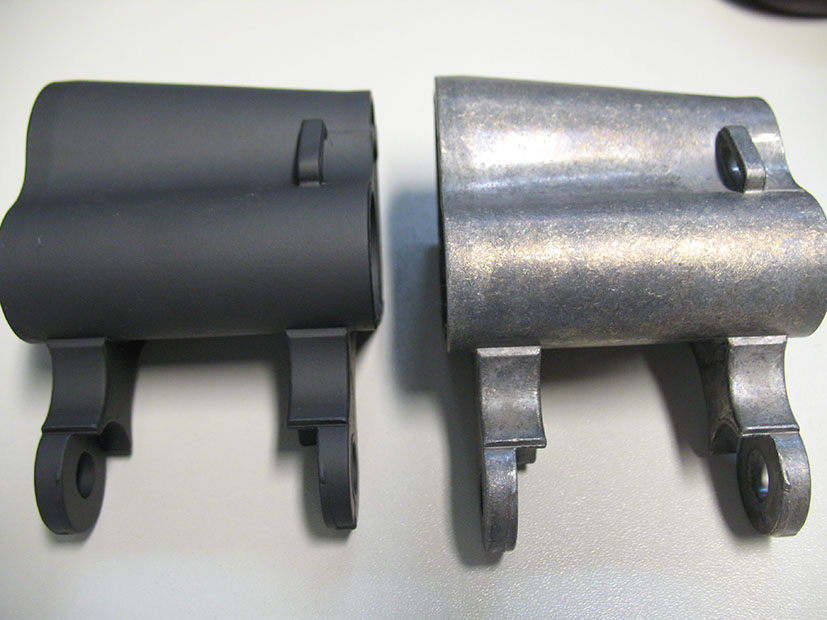Plasma Chemical Oxidation of Aluminum Alloys (PCO®13 and PCO®35)
First, scientific research and industrial application of the plasma chemical oxidation PCO® on aluminum and its alloys was carried out. Currently, the scientific works focus on the production of high absorbent black layers on aluminum alloys for the application in the optical industry and laser technology.
These layers mainly consist of:
- Mixed oxides and/ or hydroxides of the substrate
- Non-stoichiometric compounds of the substrate with ingredients of the electrolyte
Almost all aluminum alloys including cast alloys and high-silicon alloys such as DISPAL® can be coated with the following properties:
- Visual matt appearance
- Long-term stability even at operating temperatures of up to 300 °C and/ or UV exposure
- Suitability as an undercoat for bonding and paint application (adhesion strengths up to 30 MPa)
- Very good dimensional tolerance of the coated parts due to small layer thicknesses (from 5 µm) and thickness tolerances (± 2 µm)
- Layer thickness adjustable from 3 µm to 50 µm
- Electrically insulating (dielectric strength approx. 15 V/µm)
- Uniform layer formation with good wrap-around at edges
Further properties can be found in the current data sheets below.
Special modifications of the plasma chemically produced oxide layers show very good wear behavior. These properties have been proven in corresponding test stand experiments. The modified aluminum oxide layers provided the 100Cr6 counterparts distinctly with clear signs of wear and the analysis of their surfaces proved the corresponding abrasion products.

Martin Teumer
Surface Technology
Team Leader
Electrochemistry
e-mail
Phone: +49 3641 20498 23




